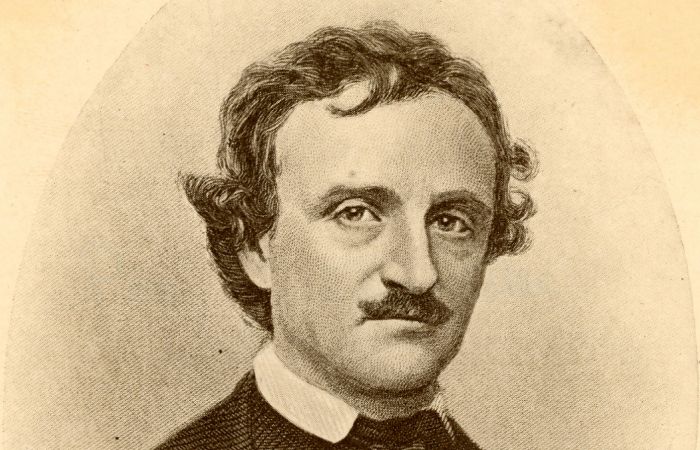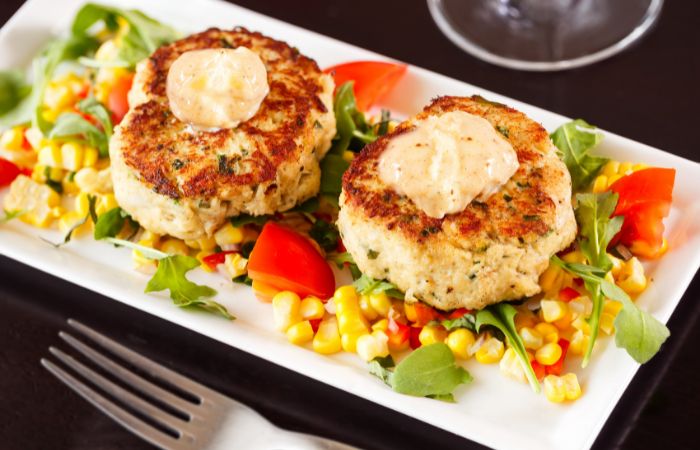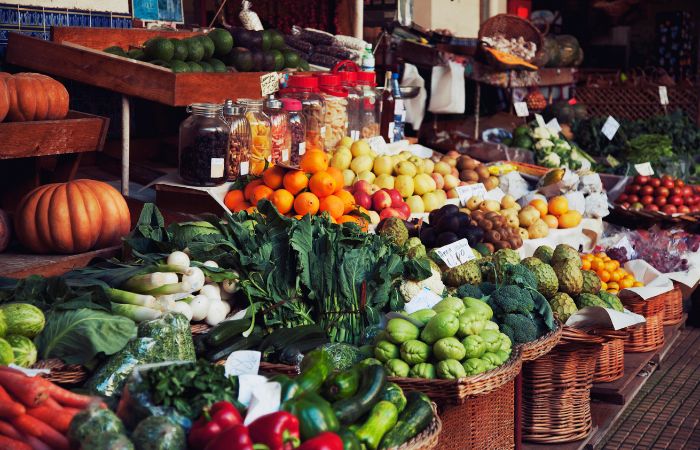Top 14 Things Baltimore is Known For & Famous For
Baltimore is the largest independent city in the United States and is not part of any county. However, the most populous city in Maryland is known for much more than simply a Jeopardy quiz question. If you’ve never been here before, there’s a lot you may not know about it!
Baltimore, Maryland, is known for being home to the Edgar Allan Poe House and Museum and the city in which he died. It is also known for Baltimore crab cakes, Lexington Market, and the Inner Harbor. Additionally, it is steeped in history and is home to the original Washington Monument.
If you’re still not sold on the importance of the city, keep reading. I’ll explore the points mentioned above in further detail and also let you in on additional facts about Baltimore you may not be aware of.
Related: Top 21 Things Maryland is Known For
Disclaimer: This post may contain affiliate links. We may earn a small commission for purchases made through links in this post, at no extra cost to you.

Baltimore Is Linked to Edgar Allen Poe
Edgar Allen Poe is one of the best-known American writers and poets of all time. His famous works include the poems The Raven and Annabel Lee, as well as numerous short stories.
These include:
- The Tell-Tale Heart
- The Black Cat
- The Cask of Amontillado
- The Fall of the House of Usher
- The Masque of the Red Death
- The Pit and the Pendulum
Though Poe was born in Boston, he is deeply connected to Baltimore. He moved around the country a lot, and Baltimore was one of the cities where he stayed the longest.
He initially moved to Baltimore in 1829, at the age of 20. It was in this year that he published his second book of poems, Al Aaraaf, Tamerlane and Minor Poems, in the city. He left the city the following year and entered the United States Military Academy in West Point before returning to Baltimore in 1831.
Poe would travel back and forth between Baltimore and several other cities in the country, returning on several occasions. One memorable occasion was in 1835 when he applied for, and received, a license to marry his cousin, Virginia.
Virginia died in 1842 of tuberculosis, and Poe became increasingly unstable following her death.
He was found on the city’s streets on October 3rd, 1849, delirious and in need of medical assistance. He died four days later at Washington Medical College (known today as Church Home and Hospital) on October 7th.
Following his death, he was buried in the city at Westminster Hall and Burying Ground. The first known home in which he lived in the city is today known as the Edgar Allan Poe House and Museum.
He is thought to have lived in the house between 1833 to 1835, between the ages of 23 and 25.
The museum hosts the annual International Edgar Allan Poe Festival & Awards. Also known as Poe Fest International, it is a two-day outdoor festival held near the house to commemorate the author’s death anniversary. The home was recognized as a National Historic Landmark in 1972.

Baltimore Crab Cakes Are a Local Delicacy
For lovers of all things seafood, Baltimore crab cakes are a must-try. They are perhaps the most popular food in the city and are a snack that you will find across most restaurants in Baltimore.
However, if you’re looking for restaurant recommendations for where you can get some of the best Baltimore crab cakes in the city, some popular options include:

Lexington Market Is One of the Oldest Markets in the Country
Lexington Market first opened its doors to the public in 1782 and has been operating since then. This makes it one of the longest-running markets in the country and the world and is the largest market in the six-market Baltimore Public Markets system.
The market features over 40 vendors and is located in two buildings at the intersection of Lexington and Paca Streets. Some of the best-known vendors in the market include:
- Faidley’s Seafood
- DeBaufre Bakeries (also known as Berger Cookies)
Aside from being popular among locals, Lexington Mrket is also a top tourist destination in the city. It was named the “Best Way to Introduce Outsiders to Baltimore” by Baltimore City Paper in 2001.

Baltimore’s Inner Harbor Made It a Major Seaport
Second only to Ellis Island in New York, Baltimore was one of the largest ports of entry for immigrants to the United States before the First World War. However, the Inner Harbor was much more than just an important port of entry into the country, as it also helped make the city a major seaport.
However, due to the shallow water in this area, this port was not suitable for heavy industry or the entry of large ships. Other ports in the city were used for these purposes instead.
The area saw a downturn following the end of the Second World War, a period that also saw the city suffer from an economic downturn. However, the waterfront was gradually redeveloped between the 1950s and the 1980s.
Today, it is home to some of the city’s major attractions, including:
- The National Aquarium
- The Maryland Science Center
- A 7-mile (11.27 km) waterfront promenade
- The USS Constellation Museum
- The Port Discovery Children’s Museum

Baltimore Is Home to the Annual Artscape Festival
Held annually in the Mount Royal neighborhood in the city, Artscape is the largest free arts festival in the country. It was first held in 1982 and has since become an annual Baltimore staple.
However, it was canceled in 2021 due to the Covid-19 pandemic.
The festival attracts over 350,000 people, and programs include everything from installations and exhibitions to literary art, visual art, and musical performances. The festival has performances from prominent musical names in the past, with significant performers including:
- Ray Charles and Etta James in 2001.
- Ray Charles also performed at the inaugural festival in 1982.
- Aretha Franklin in 1994
- Maya Angelou in 1999
The City Has Its Own Dialect
If you’ve never visited the city or spoken to a Baltimore native before, be prepared to be surprised by the way native Baltimoreans speak. The city and the surrounding regions are home to a unique dialect of English.
This dialect is named after the city and is called the Baltimore dialect. It is best characterized by the way in which the long “o” vowel (such as in the words “tomato” and “total”) is pronounced – an “eh” sound is added to the word before this vowel.
Another distinctive aspect of the dialect is the way in which speakers drop the “t” sound in words. For example, “water” would be pronounced “wooder,” and “this” would be pronounced very similarly to “dis.”
The Baltimore dialect – also known as the Bawlmerese accent – is very similar to another local dialect, the Philadelphia dialect. However, it also has some Southern influences, which help distinguish it as its own unique dialect/accent.

Baltimore Is Steeped in History
When you hear of the Washington Monument, what city do you think of? Probably Washington, D.C.
However, the Washington Monument in the country’s capital is not the original version of the monument. The original Washington Monument – also the first monument built in the United States to honor George Washington – is located in Baltimore.
Baltimore’s Washington Monument is situated at the intersection of Mount Vernon Place and Washington Place, which is in the Mount Vernon neighborhood of the city. The city is named after Washington’s home, also called Mount Vernon, and is one of the oldest and wealthiest neighborhoods in the city.
The monument was designed by architect Robert Mills, who would later design the better-known Washington Monument in the capital.
He also designed several other notable buildings, including:
- The Treasury Building in Washington, D.C.
- The General Post Office in Washington, D.C.
- Monumental Church in Richmond, Virginia
- The Fireproof Building in Charleston, South Carolina
Construction on the monument began in 1815, only 16 years after Washington’s death in 1799. The monument was completed in 1829. However, details were added to it in the 1830s, including inscriptions that documented significant events in Washington’s life.
The Washington Monument was closed in 2010 due to damage to the structure and safety concerns, and restoration started in 2014. During the restoration, the original 1815 cornerstone was rediscovered, as was a time capsule buried on the monument’s centennial in 1915.
The time capsule contained early pictures of the Declaration of Independence, a portrait of Francis Scott Key (writer of the Star-Spangled Banner), and contemporary newspapers.
The 1815 cornerstone was found with three glass jars that were stuffed with newspapers and several wrapped bundles. These bundles included the Bible, a copy of Washington’s farewell address, several copies of the Federal Gazette (including one from July 3rd, 1815, which contained a reprinting of the Declaration of Independence), 10 American coins, and more.
The artifacts from both the time capsule and the cornerstone are displayed at the Maryland Historical Society. The restoration was completed in 2015, and the monument was opened on the bicentennial of the laying of the cornerstone on July 4th, 2015.
Other historic sites in the city include:
- USCGC Taney: The last warship that fought in the attack on Pearl Harbor, the ship was decommissioned in 1986 and has served as a museum ship located in the Inner Harbor. It was listed as a National Historic Landmark in 1988 but was renamed WHEC-37 in 2020 due to the connection of namesake Roger B. Taney to the Dred Scott v. Sandford decision.
- Fort McHenry: A bastion fort in Baltimore, Fort McHenry is best known for its role during the War of 1812 and its successful defense of the Baltimore Harbour against the British navy. It was used through the First and Second World Wars and was designated a National Monument in 1939. The fort also played a role in inspiring Francis Scott Key to write the Star-Spangled Banner.
Aside from being home to several historic sites, Baltimore is also the birthplace of several key figures in American history. These include:
- Thurgood Marshall: Marshall was the first African-American judge to serve on the Supreme Court. Additionally, he argued several critical legal cases as a lawyer, including Brown v. Board of Education, Smith v. Allwright (which held that voters could not be restricted based on race), and Shelley v. Kraemer (which helped end racial discrimination in housing).
- Elijah Cummings: Cummings served in the House of Representatives as the Representative from Maryland’s 7th District for 23 years, from 1996 until his death in 2019. He was also a civil rights advocate and was the first African-American named Speaker Pro Tempore in the Maryland General Assembly.
- Spiro Agnew: The 39th vice president of the United States, Agnew served under Richard Nixon from 1969 until his resignation in 1973. He also served as the Governor of Maryland from 1967 to 1969.
- M. Carey Thomas: The second president of Bryn Mawr College, Thomas was a suffragist and educator. She was also the first president of the National College Women’s Equal Suffrage League, a significant member of the National American Woman Suffrage Association, and one of the first advocates for the inclusion of an equal rights amendment to the Constitution.
- Babe Ruth: Considered to be one of the greatest sportspeople in American history, Ruth is best known for hitting 712 home runs in his career, a record that stood for nearly 40 years until 1974. He won the World Series seven times, and he was one of the first five members elected into the Baseball Hall of Fame in 1936, one year after retiring from the game.
- Nancy Pelosi: Currently serving as the Speaker of the House of Representatives and as a member of the House of Representatives from California, Pelosi was born in Baltimore in 1940. She is currently second in the presidential line of succession, following Vice President Kamala Harris.
- Michael Phelps: Swimmer Phelps is the most decorated Olympian of all time. He boasts 28 Olympic medals, including 23 gold medals. Additionally, his 8 gold medals at the 2008 Beijing Olympic Games is the current record for the most gold medals by an athlete in a single Olympics. He is the current world record holder for the long course men’s 400-meter individual medley.

Final Thoughts
Baltimore is one of the most history-rich cities in the country. It is home to major educational centers like Johns Hopkins University and Johns Hopkins Hospital and features over 65,000 properties listed on the National Register of Historic Places, the most in any city in the country.
Though it is overshadowed by other cities on the East Coast like Boston and New York, it is undeniably one of the most important cities in the country, both historically and today.
If you’re planning a trip to Baltimore be sure to check out these 111 places you must not miss!
Discover more about the United States here.
Disclaimer: The below text contains affiliate links. We may earn a commission for purchases made through links in this post, at no extra clost to you.
– Booking Resources –
– Plan Your Trip with Confidence! –
Viator – Discover and book a diverse array of curated tours and activities worldwide through Viator’s platform, connecting travelers with authentic experiences crafted by local experts.
See what tours Viator currently has to offer here.
Viator also offers virtual tours here.
Tours4Fun – Explore a wide selection of handpicked tours, attractions, and vacation packages globally, connecting adventurers to enriching travel experiences designed by local insiders. Find your next adventure with Tours4Fun here.
Hostelworld – Unlock a world of budget-friendly accommodation options with HostelWorld, your gateway to a global network of hostels and budget stays, ensuring affordable and convenient stays for travelers around the world. Find accommodation for your travels on Hostelworld here.
World Nomads – Protect your adventures with World Nomads. Comprehensive travel insurance for every traveler. Get coverage that travels with you, wherever your wanderlust leads. Get an insurance quote with World Nomads here.
One Comment
Comments are closed.